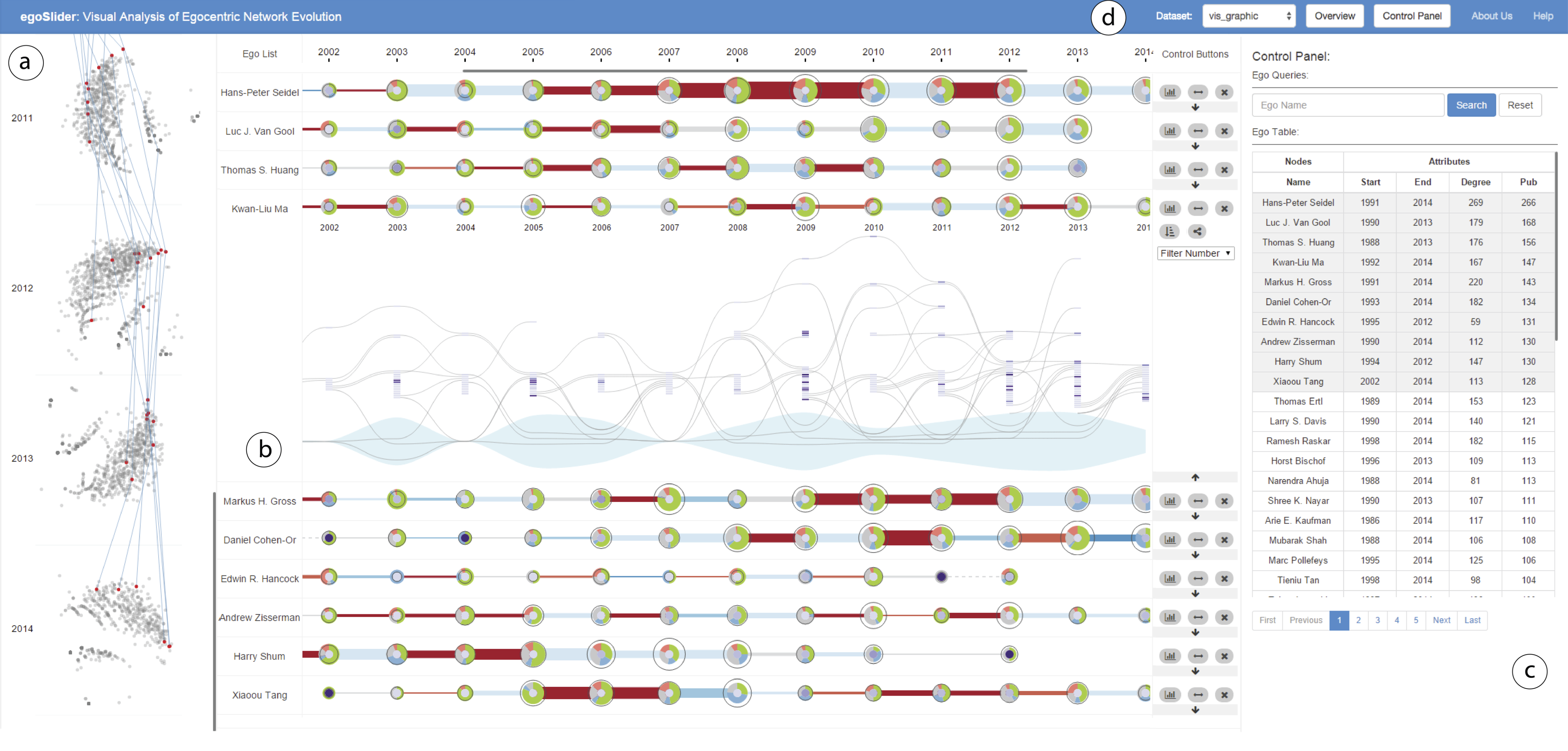Personal Network Analysis - ppt download
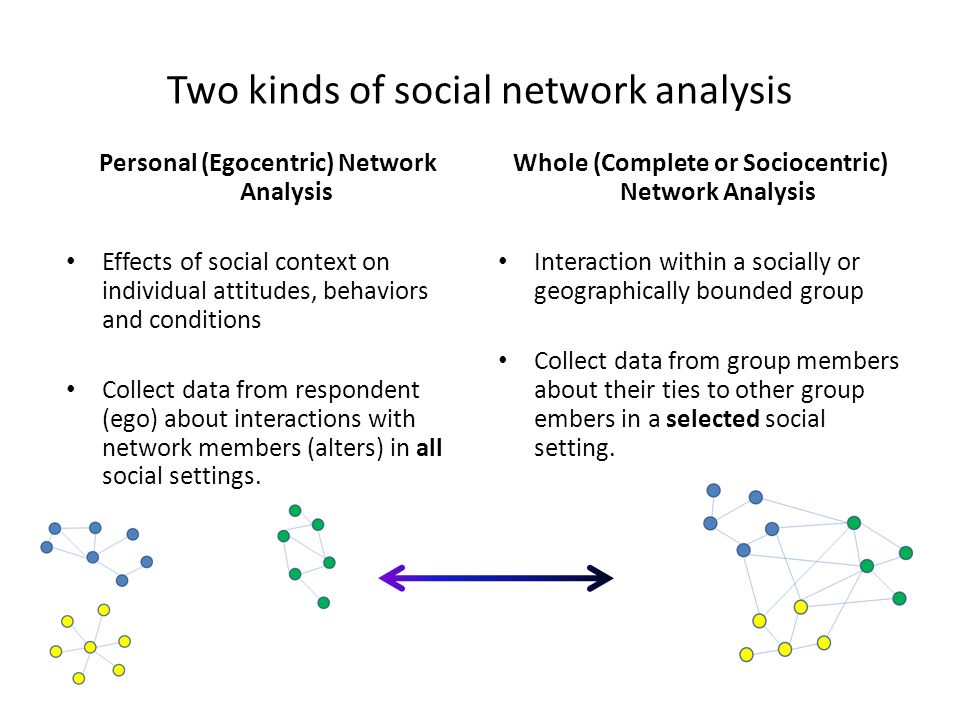
Two kinds of social network analysis Personal (Egocentric) Network Analysis Effects of social context on individual attitudes, behaviors and conditions Collect data from respondent (ego) about interactions with network members (alters) in all social settings. Whole (Complete or Sociocentric) Network Analysis Interaction within a socially or geographically bounded group Collect data from group members about their ties to other group embers in a selected social setting. Chris, I deleted some nodes in the whole network of the right because SOME NODES are not captured by the sociocentric networks (for instance, family …).
Personal (Egocentric) Network Analysis. Effects of social context on individual attitudes, behaviors and conditions. Collect data from respondent (ego) about interactions with network members (alters) in all social settings. Whole (Complete or Sociocentric) Network Analysis. Interaction within a socially or geographically bounded group. Collect data from group members about their ties to other group embers in a selected social setting. Chris, I deleted some nodes in the whole network of the right because SOME NODES are not captured by the sociocentric networks (for instance, family …).
Personal and whole networks are part of a spectrum of social observations. Different objectives require different network lenses
Example: Predict depression among seniors using the cohesiveness of their personal network. Social or geographic space. Social influence crosses social domains. Network variables are treated as attributes of respondents. These are used to predict outcomes (or as outcomes)
Focus on social position within the space. Social or geographic space. Example: Predict depression among seniors using social position in a Retirement Home.
Use overlapping networks as a proxy for whole network structure, and identify mutually shared peripheral alters. Social or geographic space. Example: Predict depression among seniors based on social position within a Retirement Home and contacts with alters outside the home.
Egocentric means focused on Ego . You can do an egocentric analysis within a whole network. See much of Ron Burt’s work on structural holes. See the Ego Networks option in Ucinet. Personal networks are egocentric networks within the whole network of the World (but not within a typical whole network).
If the phenomenon of interest occurs within a socially or geographically bounded space. If the members of the population are not independent and tend to interact. When to use personal networks. If the phenomena of interest affects people irrespective of a particular bounded space. If the members of the population are independent of one another. When to use both. When the members of the population are not independent and tend to interact, but influences from outside the space may also be important.
Like snowflakes, no two personal networks are exactly alike. Social contexts may share attributes, but the combinations of attributes are each different. We assume that the differences across respondents influences attitudes, behaviors and conditions.
Ascribed characteristics. Sex. Age. Race. Place of birth. Family ties. Genetic attributes. Chosen characteristics. Income. Occupation. Hobbies. Religion. Location of home. Amount of travel.
Ascribed characteristics such as sex, and chosen characteristics such as hobbies, may interact with culture to effectively screen potential alters. Ascribed characteristics may influence chosen characteristics, but not the reverse.
By showing people how the whole network functions changes can be made to benefit the group. Individuals may use the knowledge of their social position to their advantage. People often have a lot of choice over who is in their personal network (but they may not know it) Based on ascribed characteristics and chosen characteristics, some people may make conscious choices about the type of people they meet and who they introduce.
Social outcomes. Personality. Acculturation. Well-being. Social capital. Social support. Health outcomes. Smoking. Depression. Fertility. Obesity.
How could we intervene in this network
Composition: Variables that summarize the attributes of alters in a network. Average age of alters. Proportion of alters who are women. Proportion of alters that provide emotional support. Structure: Metrics that summarize structure. Number of components. Betweenness centralization. Subgroups. Composition and Structure: Variables that capture both. Sobriety of most between alter. Is most degree and most between central alter the same person
Name. Closeness. Relation. Sex. Age. Race. Where Live. Year_Met. Joydip_K Shikha_K Candice_A Brian_N. 23. Barbara_A Matthew_A. 20. Kavita_G. 22. Ketki_G. 54. Kiran_G. Kristin_K Keith_K Gail_C Allison_C. 19. Vicki_K Neha_G. .
* Proportion of personal network that are women … *Average age of network alters … *Proportion of strong ties … * Average number of years knowing alters …
36 Percent Host Country. 44 Percent Host Country. Percent from host country captures composition. Does not capture structure.
Joydip_K. Shikha_K. Candice_A. Brian_N. Barbara_A. Matthew_A. Kavita_G. Ketki_G
Average degree centrality (density) Average closeness centrality. Average betweenness centrality. Core/periphery. Number of components. Number of isolates.
Components captures separately maintained groups (network structure) It does not capture type of groups (network composition)
SD Average Betweenness SD Betweenness centrality captures bridging between groups. It does not capture the types of groups that are bridged.
Goals, design, sampling, bias & name generators issues.
Personal network data are time-consuming and difficult to collect with high respondent burden. Sometime network concepts can be represented with proxy questions. Example: Do most of your friends smoke By doing a network study you assume that the detailed data will explain some unique portion of variance not accounted for by proxies. It is difficult for proxy questions to capture structural properties of networks.
Sometimes the way we think and talk about who we know does not accurately reflect the social context
FAMILY. WORK. FRIENDS. CHURCH. GYM.
Estimate the prevalence of a personal-network characteristic in a population. Sampling should be as random and representative as possible. Sample size should be selected to achieve an acceptable margin of error. Example: Sample 411 personal networks to estimate the proportion of supportive alters with a five percent margin of error. Analyze the relationship between personal-network characteristic and something you want to predict Sampling should maximize the range of values across variables to achieve statistical power. Example: Sample 200 personal networks of depressed and 200 of not depressed seniors to test whether the number of isolates predicts depression.
Part of any survey. 1. Identify a population. 2. Select a sample of respondents. 3. Ask questions about respondent. Unique to personal network survey. 4. Elicit network members (name generator). 5. Ask questions about each network member (name interpreter). 6. Ask respondent to evaluate alter-alter ties. 7. Discover with the informant new insights about her personal network (through visualization + interview).
Choose wisely, define properly – this largely will determine your modes of data collection and the sampling frame you will use to select respondents. Certain populations tend to cluster spatially, or have lists available, while others do not. Race and ethnicity may seem like good clustering parameters, but are increasingly difficult to define.
Face-to-face, telephone, mail, and Web (listed here in order of decreasing cost) The majority of costs are not incurred in actually interviewing the respondent, but in finding available and willing respondents. Depending on the population there may be no convenient or practical sample frame for making telephone, mail, or contact.
The combination of population definition and survey mode suggests the sample frames available. Sample frames may be census tracts, lists of addresses, membership rosters, or individuals who respond to an advertisement.
GOAL: develop a personal-network measure of acculturation to predict migrant behavior outcomes. CHALLENGE: develop an acculturation measure not dependent on language and/or geography. POPULATION: migrants in the US and Spain. SURVEY MODE: face-to-face computer assisted. SAMPLE FRAME: Miami, NYC, Barcelona; n=535 recruitment via classifieds, flyers, and snowballing.
These are the dependent (outcome) variables you will predict using network data, or the independent (explanatory) variables you will use to explain network data and for controls. Dependent. Depression. Smoking. Income. Independent. Number of moves in lifetime. Hobbies. Controls. Age. Sex. Be aware that it is common to find relationships between personal network variables and outcomes that disappear when control variables are introduced.
Variable. Health. Depression. Smoking. Children. Average Degree Centrality (density) Sex (1=Male) Generation (1=First) Age Skin color (1=White) Marital status (1=Never Married) Employed (1=No) Education (1=Secondary) Legal (1=Yes) R Square
Ensure that your questions are valid, brief, and are not double-barreled or leading. You can ensure survey efficiency by utilizing questionnaire authoring software with skip logic.
Name generators are questions used to elicit alter names. Elicitation will always be biased because: Names are not stored randomly in memory. Many variables can impact the way names are recalled. Respondents have varying levels of energy and interest.
The setting. Home. Work. The use of external aids. Phone. Address book. Facebook. Others sitting nearby. Serial effects to naming. Alters with similar names. Alters in groups. Chronology. Frequency of contact. Duration.
Large sample of alters. Name 45 alters. Force chronology. List alters you saw most recently. Diary. Force structure. Name as many unrelated pairs and isolates. Force closeness. Name people you talk to about important matters. Attempt randomness. Name people with specific first names.
Memory. Fatigue. Motivation. The number of alters listed is not a good proxy for network size. There are other ways to get network size. RSW. Network Scale-up Method. Structural metrics with different numbers of alters requires normalization. Sometimes is preferable to have respondents do the same amount of work.
Revealing illegal or dangerous activity. With many alters ego will need a name that they recognize later in the interview. First and last name is preferable or WilSha for William Shakespeare.
Should online relationships count Relationships that exist outside should… An understudied question is the nature of exclusively online relationships relative to offline relationships.
Respondents may want to list dead people, long-lost friends, TV characters, or celebrities. They may have compromised memories. You may want to limit alters to people who provide respondents specific kinds of support.
Our prompt (pretested) for freelisting 45 alters: You know them and they know you by sight or by name. You have had some contact with them in the past two years, either in person, by phone, by mail or by , and you could contact them again if you had to. Still, migrants often didn’t understand that alters who didn’t live in the host country could be listed.
You may want to let alters keep listing names to get a network size variable, but it is hard to know why people stop listing alters (fatigue, memory, etc.) More likely, you will want less alters named, since personal network data collection is very intensive. You can use specialized prompts to more randomly elicit fewer alters or only ask questions about every Nth alter named, but keep in mind that eliciting fewer alters will unintentionally bias your sample.
Try to avoid having respondents make uninformed guesses about people they know. Still, some researchers argue it is really the respondents’ perception of their alters that influences their own attitudes and behaviors. Figuring out how well a person knows their alters and the nature of their relationships is the most challenging interpretive activity.
Research suggests that tie strength is best assessed using questions about closeness. People tend to be less close to people they do not like, even though they may know a lot about them. Asking how respondents know someone is also helpful – How did you meet (school, work, etc.)
45 alters. x 13 questions about each. = 585 total items. Demographics (age, sex, CoO, distance, etc.) Closeness of respondent/alters relationship (1-5) How they met (family, work, neighbor, school) Communication (modes, intimacy, trust ) Do they smoke
Create a summary of each variable for each respondent, keeping in mind their levels of measurement. Merge the summarized variables onto the respondent-level data to explain characteristics of respondents. Measure the extent to which alter characteristics match the respondent (ego correspondence, homophily) You can then perform frequencies, cross tabulations, and create dummy variables to be used in regressions.
% Does Not Smoke. % Smoke. Sex*** Male. 67 (200) 33 (99) Female. 80 (189) 20 (47) Employment** Full Time. 68 (103) 32 (49) Part Time. 85 (87) 15 (15) Unemployed. 73 (127) 27 (47) Retired. 83 (10) 17 (2) Self Employed. 54 (19) 46 (16) Seasonal. 72 (43) 28 (17) Acculturation. Level (150) 23 (45) Level (148) 29 (60) Level (72) 31 (32) Level (17) 35 (9) Level (2) 0 (0) Individual Attributes: age, sex, employment, etc.
Composition Variable. % Does Not Smoke. % Smoke. Proportion of alters with listed tie strength. Level Level Level 3** Level Level Proportion of alters of listed sex. Male*** Female *** Proportion of alters that are confidantes. Yes*** .39. No*** Proportion of alters that are smokers
This is a time consuming process… however, If you limit yourself to network composition, you assume the effects of social context on attitudes, behaviors and conditions are more about who occupies a personal network than about how they are structurally arranged around the respondent. Still, keep in mind the exponential nature of your chosen alter sample size…
That is, how likely is it that they have a relationship independent of you .
Some researchers do not believe respondents can report alter-tie data with any accuracy… We do. It is easier for respondents to report on the existence of ties between alters they know from different social domains than on ties between people they may not know well from a single domain. Personal networks are more attuned to the larger structures of different groups and bridging between groups than subtle interactions within groups.
Degree Centrality is the number of alters any given alter is directly connected to. Degree Centralization is the extent to which the network structure is dominated by a single alter in terms of degree. Closeness Centrality is the inverse of the distance from that alter to all other alters. Closeness Centralization is the extent to which the network structure is dominated by a single alter in terms of closeness. Betweenness centrality for a given alter is the number of geodesics (shortest paths) between all alters that the alter is on. Betweenness Centralization is the extent to which the network structure is dominated by a single alter in terms of betweenness. Components are connected graphs within a network. Cliques are maximally complete subgraphs. Isolates are alters who are not tied to anybody else.
Multi-dimensional scaling is a procedure used to determine the number and type of dimensions in a data set. Factor Analysis (also called principal components) is a procedure that attempts to construct groups based on the variability of the alter ties. Also used in survey research. Cluster analysis is a family of statistical procedures designed to group objects of similar kinds into categories. Quadratic Assignment Procedure is a bootstrap method used to determine whether two networks are different.
Network Structural Metric. Does not smoke. Smokes. Average degree centrality*** Average closeness centrality Average betweenness centrality Components Isolates* migrants with denser networks are more likely to smoke. but wait… does smoking cause the structural differences or do the structural differences cause smoking
Variable. Health. Depression. Smoking. Children. Strength of tie Alter sex Frequency of alter contact Where alters live Where alters were born Proportion family Alter age Alter race Alter as confidante Alter smoking status Average degree centrality Average closeness centrality Average betweenness centrality Isolates Components Core size
Treating each variable independently assumes composition and structure do not interact. You can only combine structural variables with compositional variables when they are calculated at the level of the alter… Centrality Scores. Density. whether or not the alter is an isolate.
Does Not Smoke. Smokes. Proportion of smoking alters that are strong ties Proportion of smoking alters that are confidantes Does Not Smoke. Smokes. Most degree central alter does not smoke Most degree central alter smokes
Personal Network Visualizations Hand-Drawn vs. Structural
Network visualization lets you quickly identify relationships between several compositional and structural variables simultaneously. Visualization should be guided by research question. The way different software algorithms places nodes with respect to one another is meaningful. Nodes and ties can often be sized, shaped, and colored in various ways to convey info.
Dominican migrant in Barcelona – age 46.
Approach of Juergen Lerner focusing on inter-group ties to create personal network types
It helps you create the questionnaire, collect data, and provide global network measures and matrices. It also provides the means to export data that can be used for further analysis by other software.
When you create a new Study, EgoNet open a folder with the name of the Study plus some subfolders when needed: interviews , graphs , statistics . The study design is saved in a file named name_study.ego. The study has four modules, Ego description, Ego-Alters’ name generator, Alters description and Alter-Alter relationship.
Study design … We will provide the .ego file at the end of this exercise in order to avoid possible problems with compatibility.
The Automatching Procedure
Overlapping Personal Networks
Develop a measure of acculturation based on personal network variables that can be used across geography and language.
Mercedes is a 19-year-old second generation Gambian woman in Barcelona. She is Muslim and lives with her parents and 8 brothers and sisters. She goes to school, works and stays home caring for her siblings. She does not smoke or drink. Laura is a 22-year-old second generation Gambian woman in Barcelona. She is Muslim and lives with her parents and 8 brothers and sisters. She works, but does not like to stay home. She smokes and drinks and goes to parties on weekends.
Table 1. Unstandardized means of personal network characteristics per identification (N = 271). Ethnic- exclusive. Ethnic-plural or transna-tional. Generic. F. Percentage of French/Wolof. Percentage of migrants. N cohesive subgroups. Homogeneity of subgroups. Density. Betweenness centralization. Average freq. of contact. Average closeness. Percentage of family ** 5.2** ** 3.2* * * p < .05; ** p < .01.
Observation: Rates of hypertension are much higher among African Americans than other racial groups. Hypothesis: Hypertension is a function of stress which is caused in part by the compositional and structural properties of the personal networks of African Americans.
62-year-old African American female with PhD, Income > $100,000, Skin Color=Dark Brown
How does composition and structure of the egocentric co-author network affect scientific impact (the h-index)
H-index. 1. # co-authors. 2. Affiliation. Univ Milan, Dipartimento Sci Terra, I Milan, Italy. Sampled article. Late Paleozoic and Triassic bryozoans from the Tethys Himalaya (N India, Nepal and S Tibet)
H-index. 1. # co-authors. 12. Affiliation. Clin Humanitas, Med Oncol & Hematol Dept, I Rozzano, MI, Italy. Sampled article. Chemotherapy with mitomycin c and capecitabine in patients with advanced colorectal cancer pretreated with irinotecan and oxaliplatin.
H-index. 31. # co-authors. 14. Affiliation. Catholic Univ Korea, Dept Pharmacol, Seoul, South Korea. Sampled article. Establishment of a 2-D human urinary proteomic map in IgA nephropathy.
H-index. 35. # co-authors. 67. Affiliation. Katholieke Univ Leuven, Oral Imaging Ctr, Fac Med, B-3000 Louvain, Belgium. Sampled article. Development of a novel digital subtraction technique for detecting subtle changes in jawbone density.
Analysis Individual Aggregated
greater ability to infer dynamic network change. high likelihood of respondent attrition. more alters may be added to networks over time. Interviewers need to keep asking egos the same questions about their alters – increasing burden.
Respondents become very interested when they first see their network visualized. By using different visualizations, you can ask respondents questions about their social context that would otherwise be impossible to consider. why they confide in some alters more than others. if they’d introduce an alter from one group into another. Why isolates in their network aren’t tied to anyone.
5. Introduction to Vennmaker
Provides a user friendly mapping layout and GUI. Can compare different individual perspectives and visualizing changes in networks over time. Allows for automated personal network interviews. Combines aspects of quantitative and qualitative network analysis in real-time (audio recording).
Female 29, single, Caucasus, immigrated 10 years ago. Deceased! 2 „conflicts region of origin. 2 regions of departure. 0 own-ethnic. contacts in GER. Intercultural. working. relationships. region of exit.
Allows for simultaneous calculation of network metrics across many cases, presently including. The program is currently in the beta stage of development, so it is still pretty rough.
Egoweb Alter Prompt Screenshot
We plan to put all data gathered during the last years in a joint Observatory open to the scientific community:
EI Index applied to personal networks
Acculturation = Composition (Type of group) + Structure (Group interaction) We propose using the EI Index.
Assuming two groups based on some attribute, one defined as internal and the other as external:
Score of 0 = Links are divided equally. Score of -1.0 = All links are internal to subunit.
Captures both composition and structure. Represents the interaction between two types of nodes.
Distribution of EI index (Most scores are positive, indicating more interaction between migrants and non-migrants than within groups)
Objective: Discover mutually exclusive and exhaustive categories in a language for how people know each other to be used on a network scale-up survey instrument.
Procedure 1: Twenty one respondents freelist in Thai ways that people know each other
Procedure 2: Twenty one respondents list 30 people they know and apply 26 most frequently occurring categories
Affiliation from all respondents
Graph of relationship between knowing categories

Personal Network Analysis - ppt download
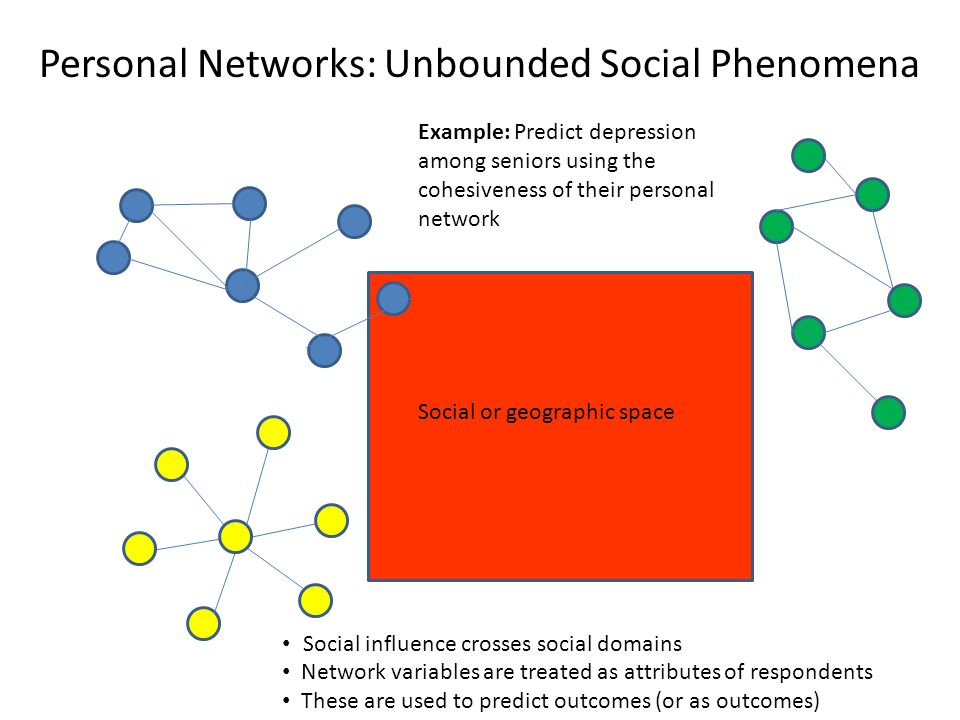
Personal Network Analysis - ppt download

PPT - Personal Network Analysis PowerPoint Presentation, free

SWOT Analysis Template for PowerPoint - PresentationGO
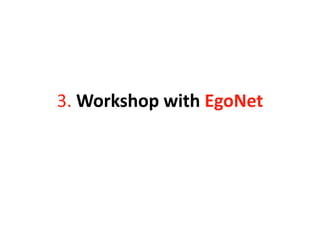
Personal network analysis september 18

PPT) Social Network Analysis and Knowledge Management

Self SWOT Analysis PowerPoint Template

PPT - Local Networks Overview PowerPoint Presentation, free
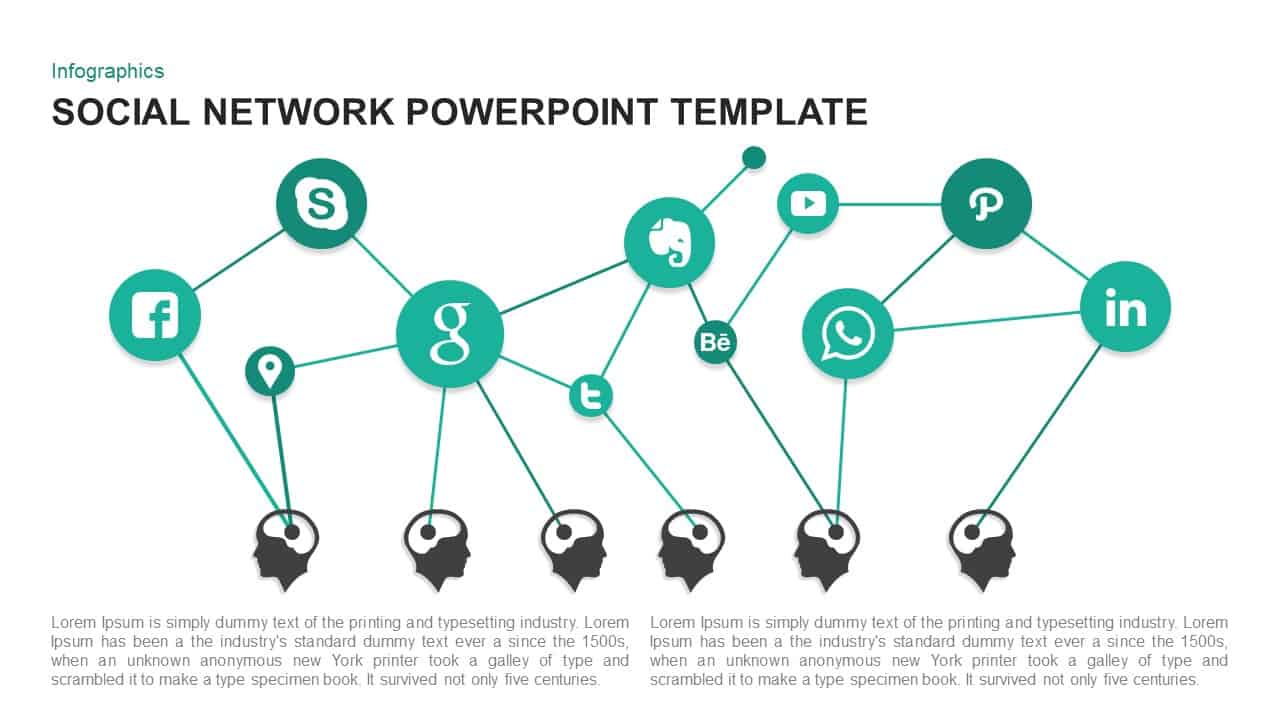
Social Network Template for PowerPoint and Keynote Presentation

Download Diagrams for PowerPoint

SOAR Analysis for PowerPoint and Google Slides








